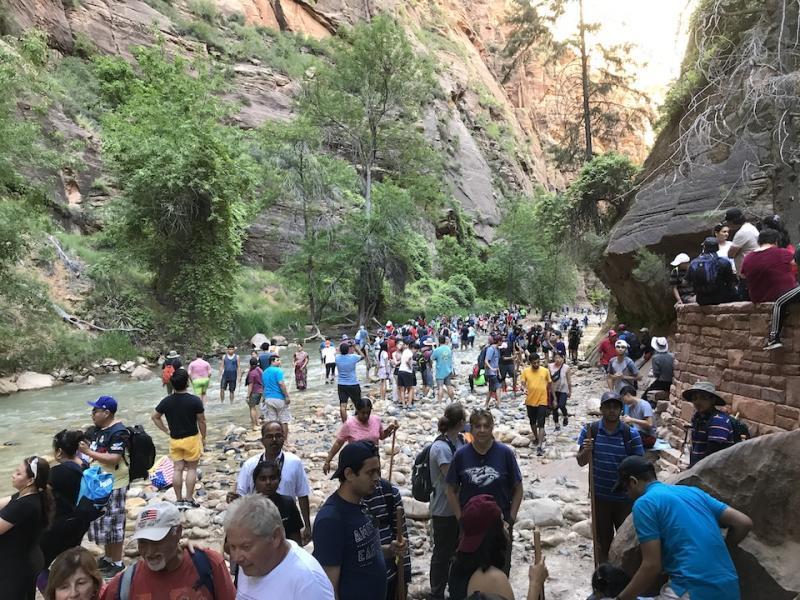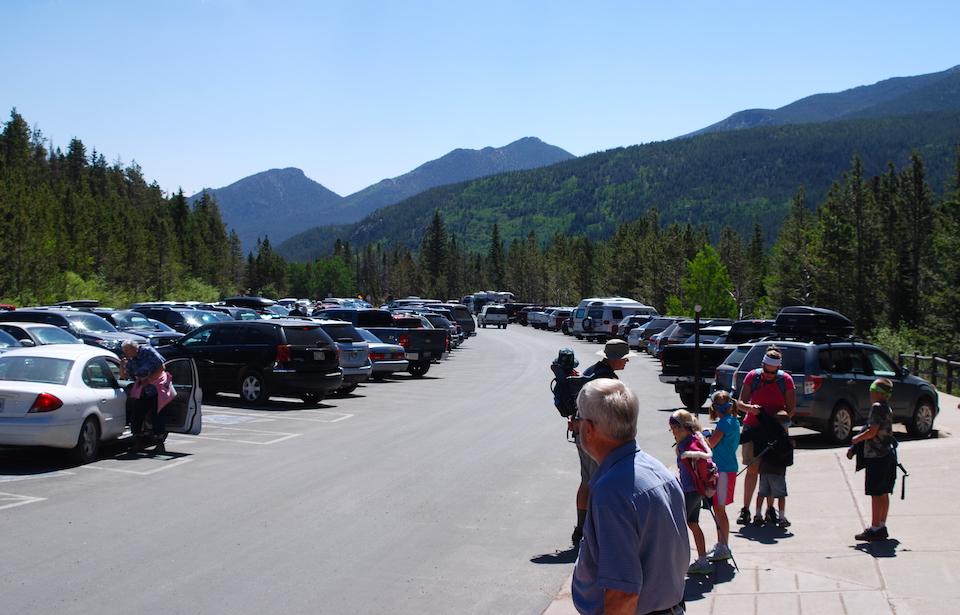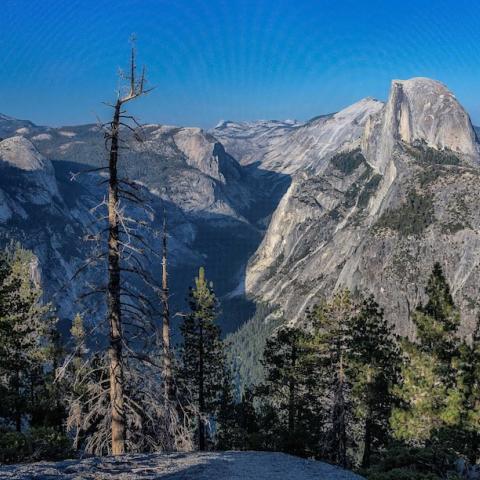
Is now the time for the National Park Service to tackle visitor management problems, such as overcrowding in parks such as Zion National Park?/NPS file
Leading up to the 100th anniversary of the National Park Service back in 2016, there was much discussion about the future of the parks. Perhaps the hallmark was the Second Century Commission's report, prepared following a year of listening sessions, professional input, and discussion. Within its outline for strengthening the Park Service and the national parks in the 21st century were recommendations for better conservation of park resources, both natural and cultural. A decade later, the Park Service remains strapped for funds, overworked, and struggling in some places to manage crowds that impact natural resources and stress staff.
Now, with many parks starting to emerge from weeks of being closed due to the coronavirus pandemic, is the time right for taking a longer look at what the "national park experience" should be? That might be presumptuous, in that different people, cultures, and ethnicities surely approach that experience differently. Yet many onlookers would agree that the overall "park experience" has been impacted by overcrowding and visitors who, in some eyes, don't see national parks with the proper reverence.
Back in 2016, shortly before the celebration of the Park Service's centennial, Zion National Park Superintendent Jeff Bradybaugh told Traveler that, "We’re just seeing a different understanding of what the park is about. How to visit. I think some of that is education. We’re kind of overwhelmed.”
His comment at the time stemmed from the fact that Zion's visitors were assaulting the park. While Zion Canyon has 15 miles of officially designated trails, visitors had created 30 miles of social trails, places where folks had hiked wherever they liked. Too, there were issues with visitors hauling "boom boxes" into the Narrows for dance parties, the superintendent said at the time.
Several months later, while Zion staff was gathering information for a Visitor Use Management Plan, Bradybaugh said, "We want to hear about your experiences at Zion National Park, your perspectives on visitor use levels, and any recommendations you may have to enhance resource protection and visitor experience.”
Zion is not alone in grappling with the visitor experience. The Yosemite Valley can resemble a small, boisterous village at peak season that can diminish the experience of marveling at Yosemite Fall or Half Dome. Yellowstone National Park crews back in 2017 created a new parking area, trail, and overlook near Grand Prismatic Spring to keep visitors from parking along the shoulder of the Grand Loop Road and walking down the road to the hot spring. Limiting visitation was not seriously considered at the time.
At Rocky Mountain National Park back in 2018, spokesperson Kyle Patterson told Traveler that, "We are hearing more and more from visitors who have indicated that they are not coming back to Rocky as a result of the congestion." Visitors looking for a parking spot high on Logan Pass in Glacier National Park can find themselves circling the parking area endlessly due to the crush of visitation.

How can parks control overcrowding in popular places, such as Grand Prismatic Spring in Yellowstone?/NPS file, Jacob W. Frank
Across the park system, impacts from crowds are many: road shoulders turning into parking areas with motorists running over vegetation, trail erosion becoming extensive, social trails zigzagging away from official trails, restrooms dirty more than they are clean, wastewater systems overtaxed, litter, stress impacting what was to have been a restful vacation, pressure to build a larger human footprint in the parks, campgrounds turning into dusty acres from overuse.
Is now, while park officials system-wide are figuring out how to reopen their parks under guidelines intended to prevent the spread of coronavirus, the time to seriously revisit the park experience? How good is the experience of watching Old Faithful erupt impacted by the thousands who crowd shoulder-to-shoulder in spots, and can the Yellowstone staff enforce social distancing in this age of coronavirus?
"How do you control 11,000 people per day on the Old Faithful boardwalk, that is basically accessible 360 degrees around, no control point where you could meter visitors if you wanted?" Yellowstone Superintendent Cam Sholly said last week, adding that his staff would not be the "social distancing police" because he didn't want to expose them to the possibility of being infected.
With coronavirus, and these visitation issues, as a backdrop, last week I asked Rob Wallace, Interior's assistant secretary for Fish and Parks and Wildlife, and David Vela, the acting Park Service director, whether now was the perfect time to take a different approach to managing visitation.
“I think that anybody that’s in the middle of this, whether it’s you as a journalist, or David and I as part of the Department of Interior, or a superintendent or a concessionaire or a park visitor, has to be asking in some form or other that very same question," Wallace replied. "What does it mean for the 21st century visitor? I don’t know that we’ve got a roadmap to that, but it clearly is a discussion about how we ought to think about the future.
“What’s it mean for visitor centers, what does it mean for fee collection, what does it mean for campers, interpretation?" he continued. "All of those issues I think are now going to be reimagined, not only by the Park Service, but you look at the Department of Interior, it has the Bureau of Land Management, the Bureau of Reclamation, and also the Fish and Wildlife Service, which I have the privilege of also having in my portfolio. All the people involved in that think about it the way that you just asked that question.
“I don’t know that we have an answer, but it’s clearly on the table now.”
Vela said that, for this year at least, "(T)he visitor experience that folks enjoyed last year is going to be radically different for a number of reasons that you can imagine."
There will be fewer seasonal park employees, at least initially, he said, and concession operations also will be scaled back.
"I think what we’re saying, and to Rob’s point, is whether we have a vaccine or not in the near future we’re going to own the covid conversation, because it impacts our housing situation, it impacts how much accessibility we can provide," said Vela. "We have in the fall just normal influenza season. How is that going to match up with covid? And so to Rob’s point, there are going to be a lot of unknowns. But here’s the salient point: We’re going to own that conversation, and we’re going to try to get ahead of it, and asking the questions that you’re asking.
“What does it mean to have to have a visitor experience in national parks for the rest of 2020? How do we operate? What’s in the realm of possibilities in the way of accessibility? How can we continue to utilize our social media and our digital environment," he added. "If a visitor center is not open, what’s available in a park before they get there? There are a number of opportunities and lessons learned that we’ve experienced that we’ll be incorporating to get to the heart of the question that you asked.”

The Bear Lake parking area fills quickly on nice summer days, prompting Rocky Mountain National Park staff to at times close access to the area except for shuttle buses/Kurt Repanshek file
Last week Public Employees for Environmental Responsibility said now, with parks designing their reopenings, is the time to implement the mandate Congress gave the Park Service in 1978: identify visitor carrying capacities for parks.
“Reopening these national parks will not be as simple as just unlocking the gates,” said PEER Executive Director Tim Whitehouse. “As many commentators have said that our national parks are being ‘loved to death,’ social distancing may prove an antidote to destructive overcrowding.”
The legal requirement that parks be managed to prevent crowds from harming park resources or detracting from visitor experience will also require new management philosophies from park superintendents who see ever higher visitation as a gauge of park success and relevance, said PEER.
At the National Parks Conservation Association, which, by the way, sponsored the Second Century Commission, Senior Vice President for Government Affairs Kristen Brengel told Traveler that the Park Service already has the tools to better manage visitation.
"We were seeing overcrowding issues in many national parks long before coronavirus threatened the health of visitors and staff. National parks have been developing plans to better manage the flow of visitors – no one wants to wait on a long line at a park entrance or circle a parking lot endlessly," she said. "There are tools in place, including timed-entry and reservation systems that can guarantee visitors a slot to visit a park, access trails or provide vehicle parking. We hope park planners are empowered to implement tools that will enhance visits to national parks and better protect resources."
At PEER, Jeff Ruch, the watchdog group's Pacific director, assailed Sholly's comment last week that his staff at Yellowstone would not enforce social distancing guidelines.
"That is a completely irresponsible position. It certainly contrasts with the stance taken by California Gov. Gavin Newsom that all state parks and beaches would be closed until means of maintaining social distancing could be implemented. If it represents NPS policy, Sholly’s statement suggests that the leadership of the National Park Service is willing to endanger visitors and staff for the sake of maintaining high levels of visitation," said Ruch.
The PEER official suggested the Park Service now has the perfect opportunity to regain control of the park experience.
"A key component at play is the steady evaporation of planning within our national parks. Despite statutory requirements, very few parks have current (within the last 20 years) general management plans and almost none has established carrying capacities," he said in an email. "It is indicative that only one of the 36 planks in the NPS’ Centennial Call to Action even mentions 'planning'—and then only in passing. This signifies the steady disappearance of park-level planning, and the almost total absence of system-wide planning.
"In other words, current and recent NPS leadership is proudly leading an unexamined existence. It also means that the public is increasingly shut out of the park planning process, which now takes place largely on a project-specific ad hoc basis, mostly behind closed doors (cell towers are an excellent example of current park 'planning)."
From Ruch's vantage point, by ignoring the implementation of visitor carrying capacities, the Park Service "appears to be taking the position that it will not even think, let alone re-think, steps to address and prevent ruinous overcrowding. That is a shocking stance, even apart from NPS shirking a clear statutory mandate. All national parks should be making sure that excessive crowding does not impair park resource or detract from the visitor experience. This type of planning should be the norm, not the exception. This obligation to engage in planning, and involve the public in that planning, is greatly magnified now in our current straits where lives are at stake."




 Support Essential Coverage of Essential Places
Support Essential Coverage of Essential Places







Comments
This is a timely, if not actually long overdue, thought provoking article on many levels. At the most trivial level, I'm certainly no fan of Cam Sholly, who holds his position by virtue of having enough in common with Zinke, Daines, and Gianforte to gain their acceptance, and, when asked about overcrowding and carrying capacity at a meeting of conservation groups early in his tenure as a new superintendent, reportedly downplayed the issues, instead implying that complaints about them were coming from longtime, older, employees who had been there too long and simply couldn't adjust to modern conditions. The article notes that limiting visitation "was not seriously considered" and I can personally attest to be a gross understatement. At the same time and being very familiar with what Yellowstone's crowds are like in terms of both obscenely excessive numbers and their complete lack of mature behavior, I can understand Sholly's current position regarding the limited ability of his staff to enforce social distancing or often even just manage riot control. At a state park lake in Texas, right next to Florida in terms of arrested development when it comes to leadership and public behavior, a park ranger recently urged "visitors" to maintain social distancing and they threw him in the lake.
However, at the next higher level, I strongly agree with the concerns that PEER, NPCA, and so many others are voicing and have been for such a very long time. The missions of our national parks go far beyond just catering to the sordid partying desires of a spoiled and libertine segment of the public; yet, increasingly, especially since November of 2000, that is the mission driver primarily being serviced. There is no viable way our public lands can properly fulfill the full spectrum of their missions while also being forced to serve as Party Barn franchises for intellectually shallow and morally dissipated mobs. Our parks have a higher purpose and it is long past time for us to drop our current convenient infatuation with mushy "go along to get along" expediency and remember the timeless warnings of Robert Stirling Yard.
PEER is right in pointing out that a "key component" has been "the steady evaporation of planning within our national parks" and that, despite statutory requirements, "very few parks have current... management plans and almost none" have established the visitor carrying capacities mandated by Congress over forty years ago. Establishing those visitor carrying capacities is a crucial first step in planning and managing our parks to fulfill all of their missions, which is precisely why special interests do not want them established. The NPS, bullied by decades of politically appointed hacks, truly has allowed, if not willfully enabled, "the steady disappearance of park-level planning, and the almost total absence of system-wide planning." And, park planning really does now take place "largely on a project-specific ad hoc basis, mostly behind closed doors" yet certainly with representatives of the concessionaires in the loop.
It will be interesting to see the difference it will make in not having foreginers visiting our National Parks this year. Maybe foreigners should be banned from visiting our National Parks forever. Sure they bring in tourist money but is it the mission of the Parks to be a profit center or a place of conservation and enjoyment for the citizens of the USA?
Well, you are consistent. Mr Baehr, the common denominator of your every comment here is anti-foreign nationals, which is pretty damn close to the book def of xenophobia. Not an admirable trait to be showing publicly.
Rick B., I resnt your false judgement of me. Is B your last name? I gave my real name. I have not made one comment that is ant-foreign nationals. I am not xenophobic. I love foreign people. I just don't want them in our national parks if the parks are crowded. We need the space in the Parks for our citizens.
OK, Bill. It is simply that in every one of your posts on NPT it seems otherwise than your assertion.
No, 'B' is not my entire last name; it is an online pseudunym. Kurt, webmaster for NPT, knows who I am and that's good enough for me. With the rabid activists roaming streets - even state capitals - with their rifles locked and loaded, it is the smart thing. If not just for me, but for my family, and if you wish to cross that line it will not end well. If you are not a rabid right winger with an itchy trigger finger, my apologies. I worked enough years both psych ward and also emergency ward to know that my concerns are not a baseless assumption.
Yup, Rick B., in this specific instance, your guess was more accurate than you might ever have imagined.